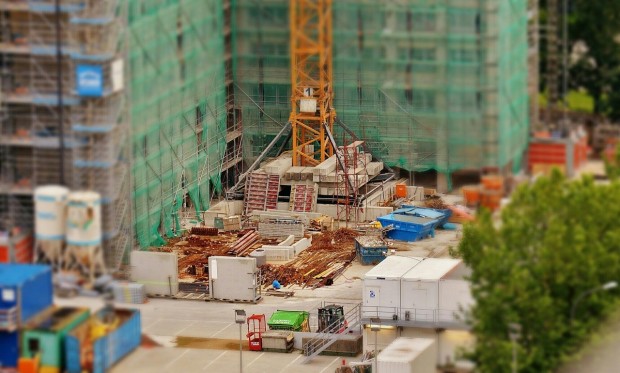As pollution continues to fuel climate change, professionals in the construction industry are consistently seeking environmentally responsible alternatives to traditional building materials. Let's delve into the top five eco-friendly construction innovations you should know.

(Photo : Pixabay/Alexa)
1. Electric Construction Equipment
For a very long time, fossil fuels have powered construction machinery. As more products are developed to operate on electricity rather than relying on construction sites' greenhouse gas (GHG) emissions, manufacturers know the imperative to reduce such emissions. Accordingly, although initial efforts towards electrification reduced carbon emissions, the industry must continue to exert more effort to bring about substantial transformation.
It is now common practice to use portable tools powered by batteries. Nevertheless, the next logical step in greening the construction sector is implementing larger machines and equipment that produce zero emissions. The elimination of possibly harmful gas emissions and the reduction of potentially destructive noise are two additional benefits of using electric equipment. This results in a better and healthier working environment for individuals on a construction site.
2. Low-carbon concrete
Concrete is a widespread material in the construction industry. The Environmental Protection Agency (EPA) of the United States of America identifies cement as a significant contributor to pollution, stating that it is the third most crucial contributor to industrial pollution. Using an interactive chart, EPA demonstrates that the release of greenhouse gases from cement increased by 3.6 million metric tons of carbon dioxide equivalents between 1996 and 2019.
Additionally, cement is only one of the components that make up concrete; other components include aggregate, sand, admixtures, and water is also included. The concrete industry needs to undergo significant transformations to become more environmentally friendly, and low-carbon concrete is one of the different ways we may move in that direction.
Also Read: Under Construction Hangar Collapsed at Idaho Airport, Killing 3 and Injuring 9 On Site
3. Adobe Brick
Adobe brick is a centuries-old building material still used today and an environmentally beneficial product. Clay and straw are the two primary components of adobe bricks widely used in the Middle East and the Americas. Moreover, similar to other organic materials, adobe insulation aids in maintaining consistent indoor temperatures.
One region in the United States that is particularly fond of this architectural style is the Southwestern region. As mentioned, adobe homes are usually classified as masonry construction by the majority of home insurance companies. This classification indicates that the building material known as masonry is believed to be noncombustible, making it simple to insure.
4. Strawbale
Straw is an additional natural material that can be utilized as a wall foundation in construction, even though finding an insurer to cover the home will be challenging due to structural concerns. Once constructed, dwellings made of straw bale are often completed with plaster. Surprisingly, some research indicates that this plaster increases the fire resistance of straw bale dwellings compared to conventional structures. There is a possibility of allergens and pests, but this natural construction is economical and environmentally friendly.
5. Ferrock
By utilizing recycled resources such as steel dust, Ferrock is a material that does not contribute to carbon dioxide emission. During the process of drying and hardening, it takes in carbon dioxide and stores it on its surface, which is what makes it carbon neutral. This is a greener option than cement and concrete, which are already relatively sustainable and environmentally friendly.
Besides being more environmentally friendly, it is also more durable than concrete. Structures constructed using Ferrock cement are assured to have a longer lifespan and will not require any replacements, repairs, or renovations while they exist.
Related Article: Key Factors Shaping the Quality of Construction Projects From Complexity of Designs to Budget







